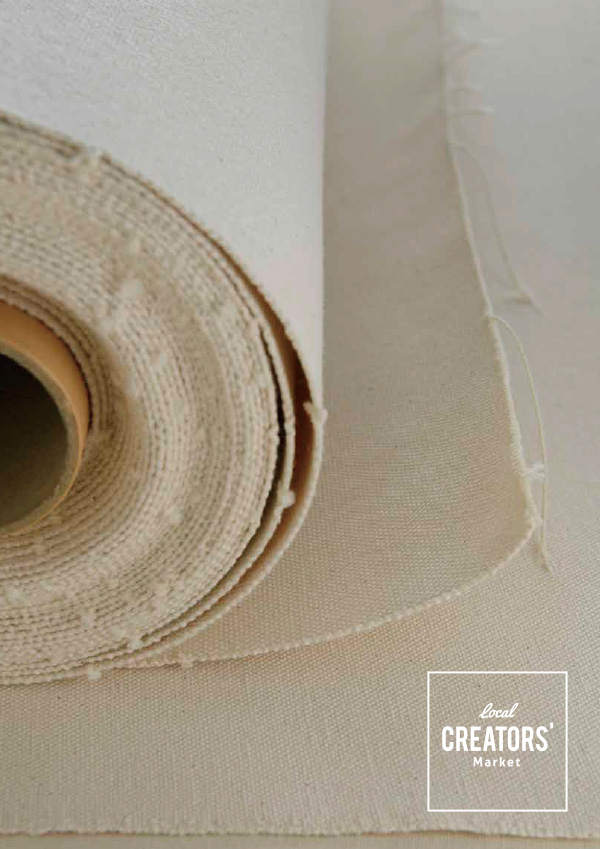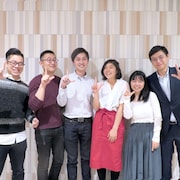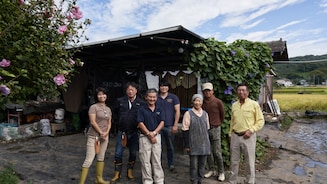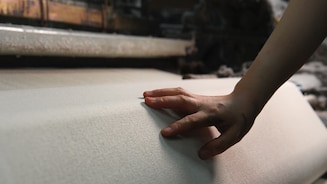While commonly known as a mecca for Japanese denim, the port city of Kurashiki in Okayama Prefecture is also Japan’s leading producer of hanpu, a high-quality and sturdy canvas cloth that helped jumpstart Japan’s economic development in the Meiji Period (1868-1912).
Located on the shores of the Seto Island Sea, the historical Bikan district of Kurashiki is home to well-preserved traditional houses, stores, canals and warehouses that date back to the Edo Period (1603-1867), built to take advantage of its key location for maritime transportation.
Far stronger than regular canvas, the production of Kurashiki hanpu can be traced back to Kurashiki’s history as a cotton plantation area, which fueled the region’s textile industry and made it one of Japan’s important commercial and manufacturing hubs.
The Fabric of Life
Much of Kurashiki is made up of reclaimed tideland. Due to the land’s high salt content, it was not suitable for growing food crops such as rice and barley. Instead, they turned to cultivating cotton–which is highly salt-resistant–transforming Kurashiki into a popular production and trading area for the crop.
Eventually, local industries did everything from processing raw cotton to producing textiles, starting out with traditional kimono sashes and cords (Sanada-himo, Kokura-himo, and Sanada-obi). As market demand changed, they developed the technology to create thick cotton fabric, leading to the production of materials such as hanpu canvas.
Continuously woven in Kurashiki since the late 19th century, canvas is a strong fabric made by twisting together threads of cotton which are then woven in a plain-weave. Compared to normal canvas, the fabric in Kurashiki is very tightly woven, making it a durable and water-resistant material that still retains excellent breathability.
From Yarn to Canvas
Even now, seventy percent of canvas produced in Japan comes from Kurashiki, with two local companies–Takeyari and Marushin–responsible for the bulk of Kurashiki hanpu production. Both these companies do everything in-house, from the twisting of the yarn to the weaving of the canvas, as well as still using traditional shuttle looms to make their cloth. However, each company also has its own proprietary techniques and strengths.
The key to creating the No.1-3 canvas lies in the old-school, Belgian-made picanol shuttle looms Takeyari uses, which were first introduced decades ago. These looms are no longer being made, and Takeyari believes they are the only producer still using the traditional shuttle weaving looms–making them the only company in the world that can produce this heavy grade of canvas.
“The old-style shuttle looms are a compromise between weaving by hand and modern high-powered looms meant for mass production,” says one craftsman. Despite being slower than newer models, these vintage machines strike a perfect balance between the need to create large volumes of fabric, while still valuing craftsmanship.
New Beginnings
In 2003, Marushin and Takeyari joined forces to launch Baistone, a joint venture that focuses on selling and marketing goods such as tote bags, interior goods and accessories made from Kurashiki canvas. The reason behind the decision was simple: both companies wanted to go beyond simply producing the material for other brands and instead reach a wider audience directly.
Check out their flagship store in Kurashiki’s Bikan Historical District, and get a feel for this fabric that has connected the community for generations.





